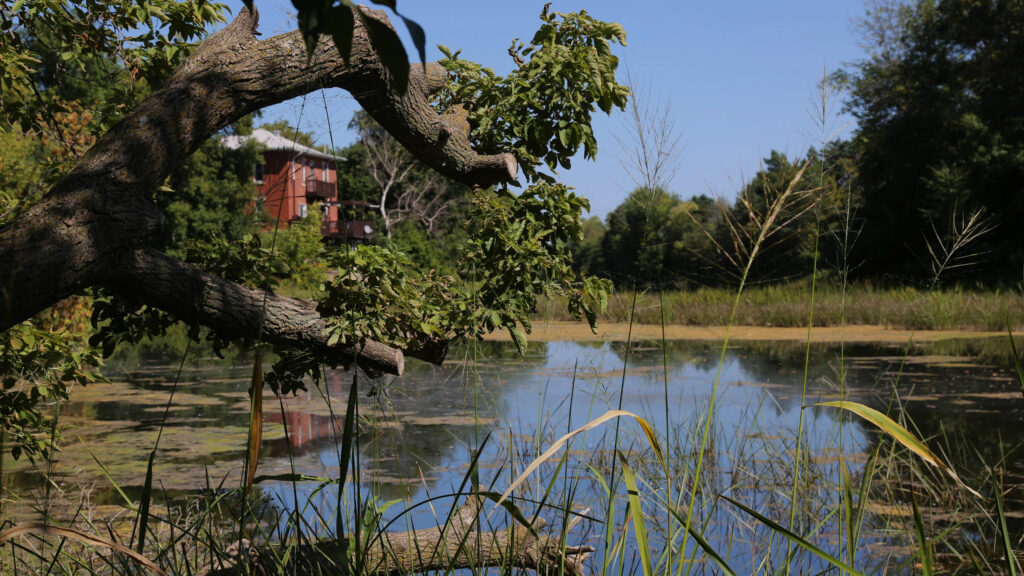
Sabina Barrett
Integrating
Traditional & Advanced Technologies
As I progress further into my career in conservation architecture, I continue to search for creative ways to apply new and traditional technologies in a way that is balanced and sustainable. This has become a driving force in my approach to my professional projects as well as restoring my own historic home.
On a personal level, I have a strong interest in experimenting with seemingly “obsolete” technologies, materials, and techniques previously abandoned in favour of newer methods, which are often derived from fossil fuels. In particular, the use of sheep’s wool as an alternative insulation in masonry buildings as well as exploring the origins of glasshouse structures before the onset of fossil fuel heating systems when thermal massing and passive design was critical in heating spaces. Both of which I have been researching with the intent to integrate into my c. 1855 stone farm house near Perth, ON.
Integrating
Traditional & Advanced Technologies
As I progress further into my career in conservation architecture, I continue to search for creative ways to apply new and traditional technologies in a way that is balanced and sustainable. This has become a driving force in my approach to my professional projects as well as restoring my own historic home.
On a personal level, I have a strong interest in experimenting with seemingly “obsolete” technologies, materials, and techniques previously abandoned in favour of newer methods, which are often derived from fossil fuels. In particular, the use of sheep’s wool as an alternative insulation in masonry buildings as well as exploring the origins of glasshouse structures before the onset of fossil fuel heating systems when thermal massing and passive design was critical in heating spaces. Both of which I have been researching with the intent to integrate into my c. 1855 stone farm house near Perth, ON.
Revitalizing
Rural Heritage & Landscapes
Rural communities including surrounding farmland and forested areas are facing an increasing risk of sprawl and development, exacerbated by the current affordability and real estate crisis, which is driving vast numbers of city-dwellers well beyond their familiar urban boundary. I feel strongly about the need for increased education, advocacy, and policy development for heritage protections, such as property, district designations, and other measures. Working on rural heritage projects helps to reaffirm a deep commitment and ongoing support to these communities.
Beyond my professional contributions, my personal landscape endeavors and participation in local initiatives are heavily influenced by botanical research and ecological conservation efforts by the Royal Botanic Gardens Edinburgh and the Royal Botanic Gardens Kew in the UK.
Revitalizing
Rural Heritage & Landscapes
Rural communities including surrounding farmland and forested areas are facing an increasing risk of sprawl and development, exacerbated by the current affordability and real estate crisis, which is driving vast numbers of city-dwellers well beyond their familiar urban boundary. I feel strongly about the need for increased education, advocacy, and policy development for heritage protections, such as property, district designations, and other measures. Working on rural heritage projects helps to reaffirm a deep commitment and ongoing support to these communities.
Beyond my professional contributions, my personal landscape endeavors and participation in local initiatives are heavily influenced by botanical research and ecological conservation efforts by the Royal Botanic Gardens Edinburgh and the Royal Botanic Gardens Kew in the UK.
Connecting
Agriculture & Architecture
Architecture has an overarching and profound impact on issues related to agriculture, horticulture, and permaculture, now and in the future. All of these disciplines serve critical roles in continuing to develop sustainable management plans to help mitigate and adapt to climate change. This applies to not only urban areas but also extends to outlying rural areas that directly support our cities within Canada and globally.
Establishing practices that support the creation and enable the growth of regenerative landscapes, that are environmentally, socially, and economically sustainable are vital. The future of food will require architectural solutions that look beyond large industrialized farm operations and the odd green roof or living wall. I believe prioritizing local, small scale self-sustaining communities will be indispensable.
Connecting
Agriculture & Architecture
Architecture has an overarching and profound impact on issues related to agriculture, horticulture, and permaculture, now and in the future. All of these disciplines serve critical roles in continuing to develop sustainable management plans to help mitigate and adapt to climate change. This applies to not only urban areas but also extends to outlying rural areas that directly support our cities within Canada and globally.
Establishing practices that support the creation and enable the growth of regenerative landscapes, that are environmentally, socially, and economically sustainable are vital. The future of food will require architectural solutions that look beyond large industrialized farm operations and the odd green roof or living wall. I believe prioritizing local, small scale self-sustaining communities will be indispensable.
Connect with Sabina
Sabina is also a member of several Horticultural Societies in Eastern Ontario and in the UK, including:

